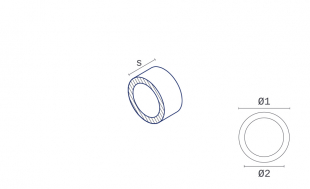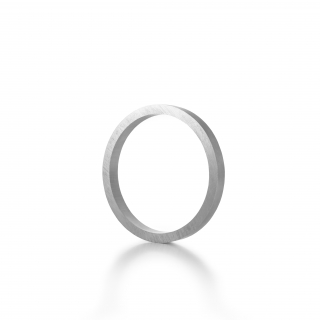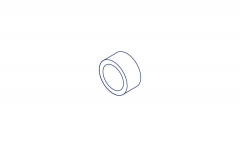FORMODAL®019 elox
ring

- Form ring
- Material Aluminum
- Material FORMODAL®019 elox
- Material chemically EN 573-3 AlMg3





| Aviation | No |
| Cr (to) | 0,3 |
| Cu (to) | 0,1 |
| Fe (to) | 0,4 |
| Mg (from) | 2,6 |
| Mg (to) | 3,6 |
| Mn (to) | 0,5 |
| Other | 0,05 |
| Rest | Aluminium |
| Si (to) | 0,4 |
| Ti (to) | 0,15 |
| Total | 0,15 |
| Zn (to) | 0,2 |
| Anodise - decorative | 2 |
| Anodising - protective anodising | 1 |
| Normal atmosphere | 1 |
| Seawater atmosphere | 1 |
| suitable according to DIN EN 602 | Yes |
| Bending | 4 |
| Deep drawing (conditional) | 5 |
| Drop forging | 1 |
| Extruding | 1 |
| Impact extrusion | 4 |
| Open die forging | 1 |
| Press | 4 |
| Upsetting (Conditional) | 4 |
| Annealing temperature min. | 345 °C |
| dimensional stability | 1 |
| Eroding | 2 |
| Material chemically EN 573-3 | AlMg3 |
| France AFNOR | - |
| Italy UNI | - |
| Norway | - |
| Spain | - |
| Sweden | - |
| United Kingdom BS | - |
| Polishing | 2 |
| Painting / Coating | 3 |
| Coefficient of thermal expansion from 20 to 100°C (typical) | 23.9 K⁻¹10⁻⁶ |
| Density (typical) | 2.67 g/cm³ |
| Electrical conductivity max. (typical) | 23 m/Ω*mm² |
| Electrical conductivity min. (typical) | 20 m/Ω*mm² |
| Modulus of elasticity (typical) | 70 GPa |
| Specific heat (typical) | 900 J/(kg·K) |
| Thermal conductivity max. (typical) | 160 W/m*K |
| Thermal conductivity min. (typical) | 130 W/m*K |
| Brazing | 4 |
| Brazing with flux | 5 |
| Friction soldering | 3 |
| Soft soldering with flux | 5 |
| Gas | 2 |
| MIG | 1 |
| Resistance spot welding | 3 |
| TIG | 1 |
| welding additives |
|
1 very good
2 good
3 moderate
4 poor
5 unsuited
0 Not specified